

CHI Update: Discovering Africa’s Heritage in Burkina Faso
By Alia Fares | Archaeologist – Ph.D. Candidate University of Cologne ; ASOR CHI Heritage Consultant/Manager
Ever since I was a child, something about Africa’s red earth seemed to pull me into its depths, triggering an archaeological curiosity in my veins to touch, smell, feel and understand what lies underneath it. A memory from a childhood trip left me with vivid scenes of a landscape, painted with vast stretches of the red earth’s hues, extending as far as the eye can see, creating a striking contrast with the vibrant green vegetation and the bright blue sky.
Forty years later, the same sense of longing surfaced when ASOR dispatched me to Burkina Faso and Niger to facilitate field training sessions for our partners working on cultural heritage documentation. After the recent success of ASOR’s heritage documentation programs in Tunisia and Morocco, we have recently expanded these efforts to the broader Sahel region, including Burkina Faso, Niger and Mali, thanks to the support of an anonymous donor.
Following several months of virtual online training in digital documentation tools using tutorials that are freely available in English, Arabic and French on ASOR’s website, we embarked on a series of practical field training exercises. Joining me was Abdelsatar Ouedraogo, a Burkinabe living in Paris and who had previously participated in ASOR’s documentation training program.
Arriving in Ouagadougou, we were welcomed by Mr. Issouf Balima, director of the social enterprise, IKAM (Institut Kôrè des Arts et Métiers) and specialized in training in cultural entrepreneurship, management, and cultural administration. He and Koombi-Solidarité, another local partner, have joined hands to support ASOR in training and documenting tangible and intangible heritage.
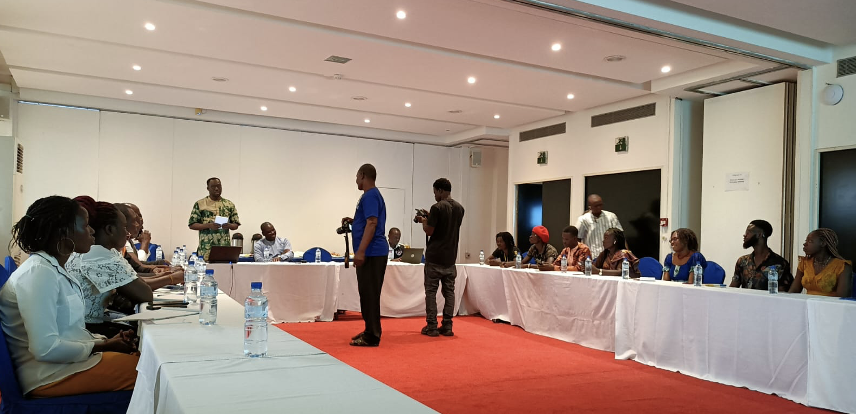
First training session at Silmande Hotel in Ouagadougou with participants. Photo: Alia Fares
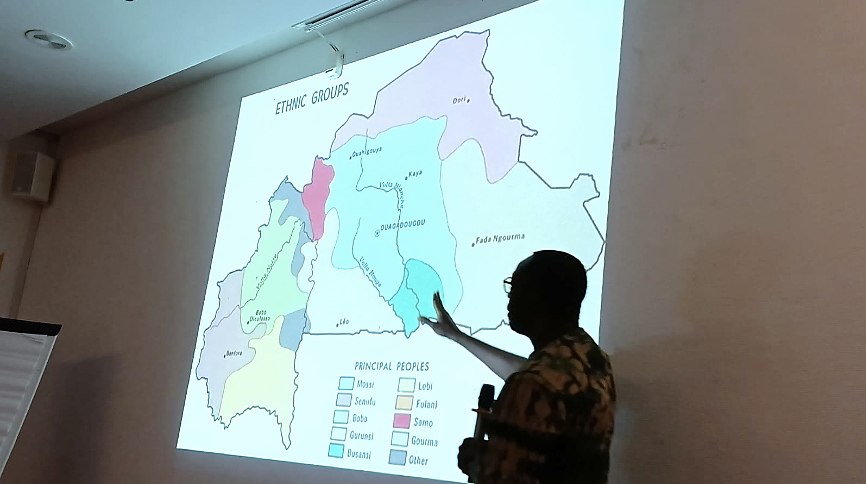
Dr. Lassina Simporé giving a lecture about heritage in Burkina Faso. Photo: Alia Fares
“Cultural heritage in Burkina Faso is in danger”, Mr. Balima said. “One of our challenges is to protect our heritage that is suffering from neglect, destruction, and ignorance. That is why IKAM decided to partner with ASOR to identify and document the various typologies of cultural heritage in our country, for the sake of our common good and our societies, our shared heritage and our future.”
KPG, short for Kientega Pingdéwindé Gérard, founded Koombi-Solidarité, a cultural and educational centre a decade ago. He has specialized in oral history, storytelling, and traditions associated with Burkinabe blacksmiths. His main interest has always been the metal forges, developing festivals around “sacred kilns”, which incorporate the spirit of his country. In his village Arbollé, we visited his metal forges, built on the premises of his home. These are inspired by the design of ancient kilns that date to the ninth century BCE found at sites such as Douroula and Tiwega, and comprise one of the UNESCO World Heritage Sites of Burkina Faso.
Following the theoretical training sessions, we hosted our first field exercise at the National Museum of Ouagadougou. Built in the traditional mudbrick style, it houses two major halls, the Grande Galerie and the Hall of the first people. The trainees photographed a series of masques and modern art sculptures in the two halls of the museum and created as well 3D models of various objects with Agisoft MetaShape. Documentation activities relied on photogrammetry, resulting in highly successful computer models of the ethnographic and archaeological collections.
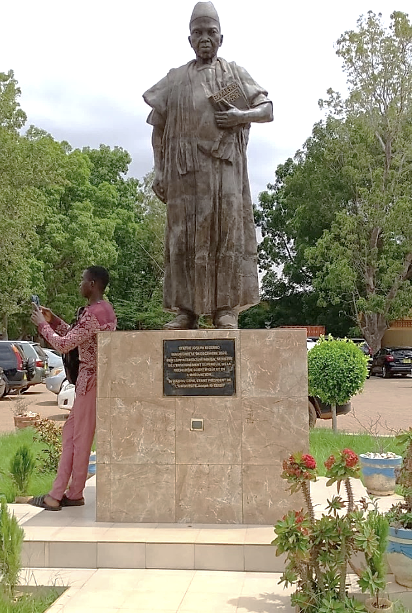
Monument of Ki-Zerbo at the university. Photo: Alia Fares
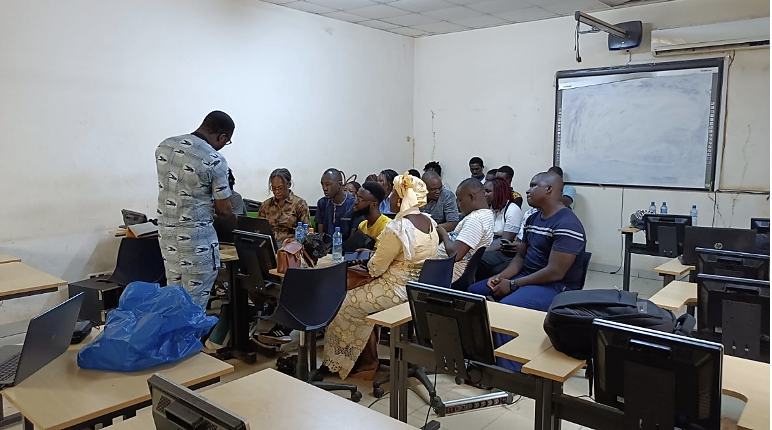
Participants preparing the 3D model of a monument and a vase. Photo: Alia Fares
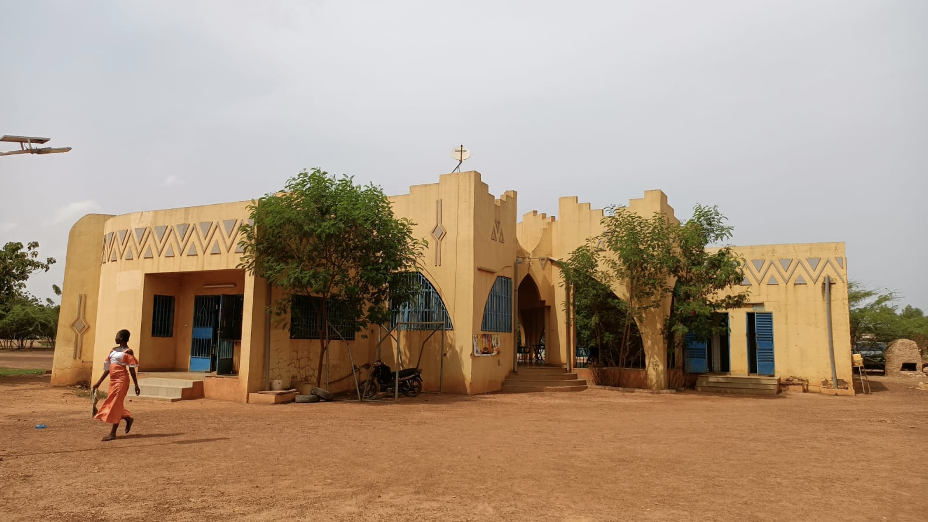
The National Museum of Burkina Faso. Photo: Alia Fares
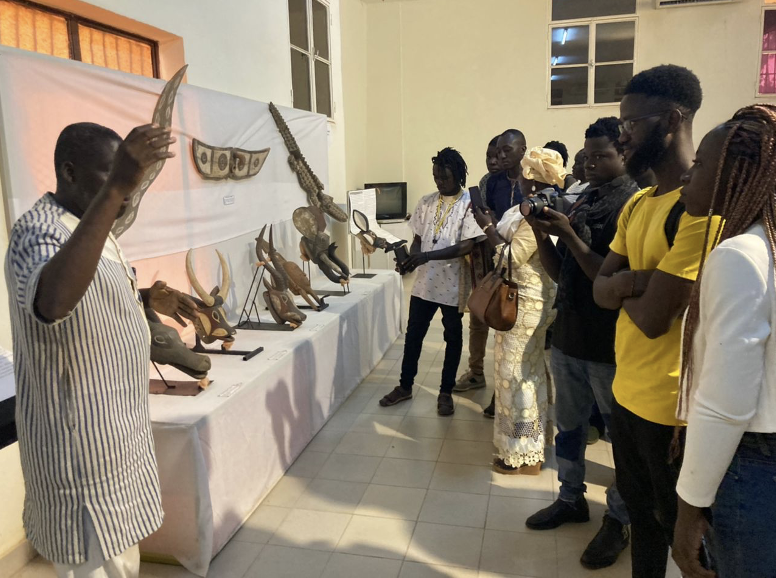
Tour guide inside the museum explaining about the anthropomorphic masques. Photo: Alia Fares
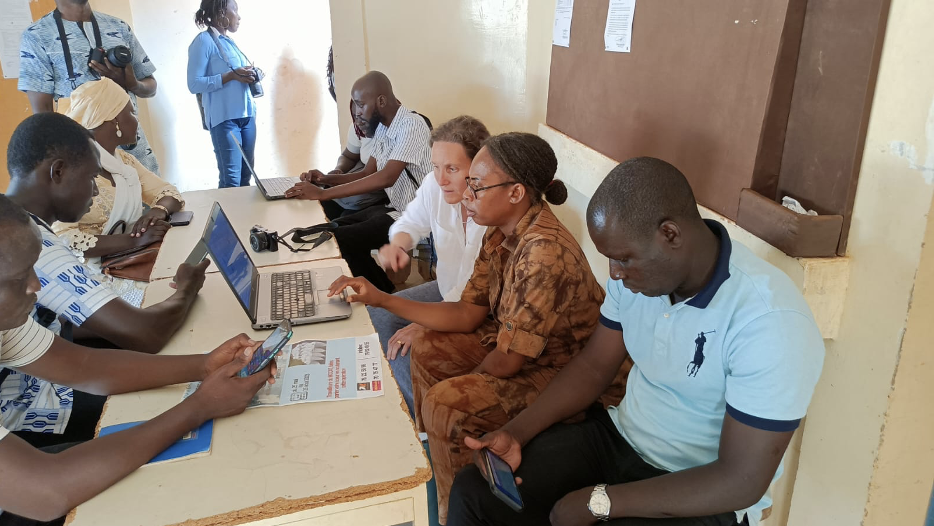
Training at the National Museum to create 3D models. Photo: Alia Fares
After the National Museum, we visited the archaeological site of Wargoandga, in Ziniaré, the region of the central plateau of Burkina Faso, and one of the most fascinating archaeological sites in the country. Various artifacts, such as pottery jars and structures were visible on the surface of this very large site. A local archaeologist, Dr. Lassina Simporé from the University of Ki-Zerbo introduced our group to the site, explaining that it is all part of a large palace residence for the kings of Wargoandga, going back to the 12th century CE. Since funding for excavations has been scarce, the full extent of the site remains unclear. While our team conducted documentation of features visible on the surface, the promise of potential future excavations was clear to all participants.
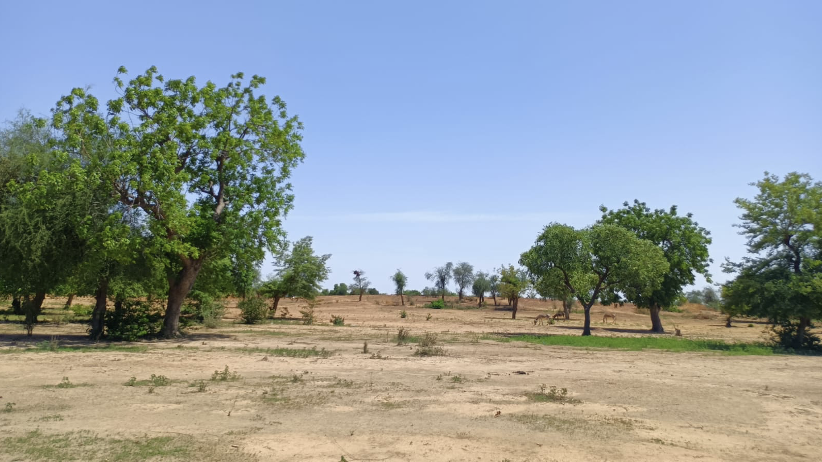
Landscape of Wargoandga archaeological site. Photo: Alia Fares
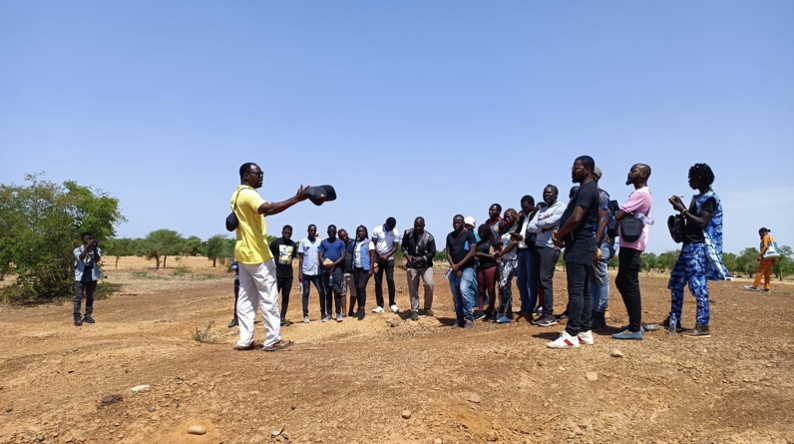
Dr. Lassina Simporé explaining the archaeological site to the participants. Photo: Alia Fares
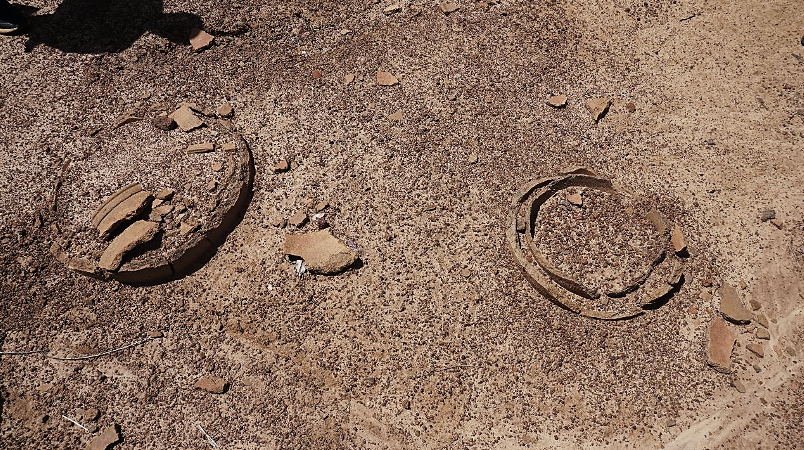
Pottery jars embedded in the ground at the Wargoandga archaeological site. Photo: Alia Fares
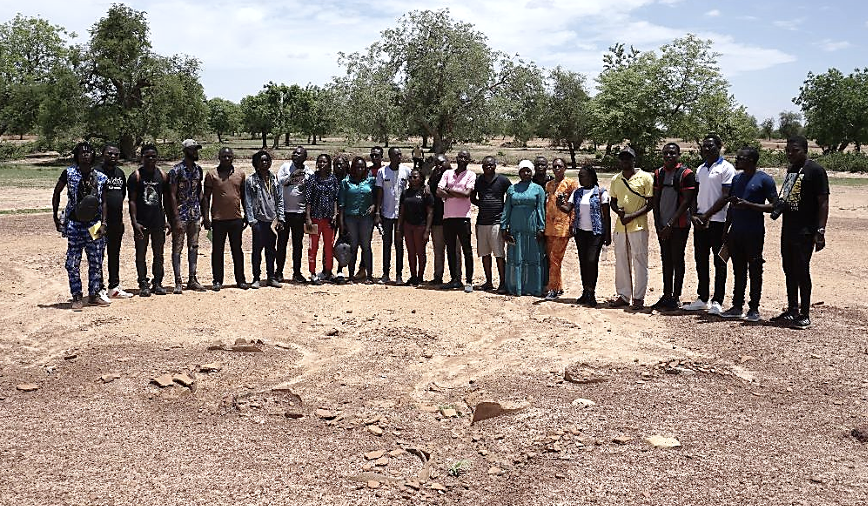
Group picture with all participants at the Wargowandga archaeological site. Notice the pottery sherds dispersed in the front. Photo: Alia Fares
Koombi-Solidarité hosted our final field training exercise at the contemporary sculpture garden of Laongo. The terrain of the park is made of a little rock of greyish, red, blue, and green granite, with bushes and trees creating the necessary shade for the artists, as he or she mark their spot and create their masterpiece in the middle of this naturally carved landscape. We initiated the first documentation activities with KoboToolbox, and KPG agreed to launch a full documentation project at the site with all the trainees.
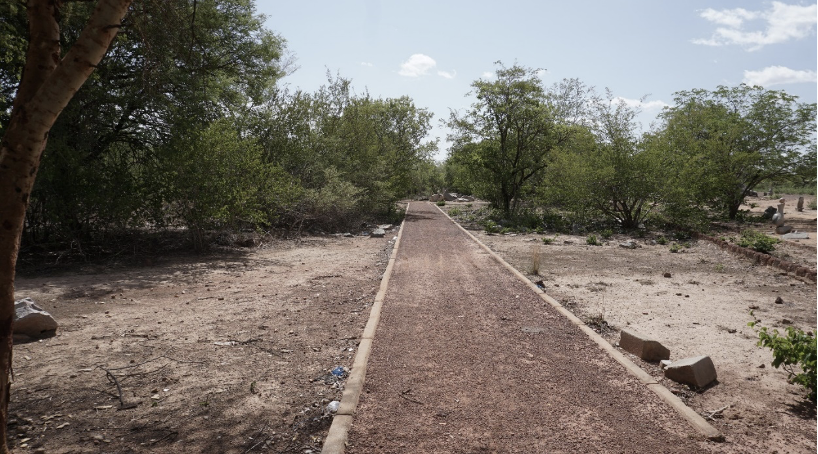
Laongo Art Museum. Photo: Alia Fares
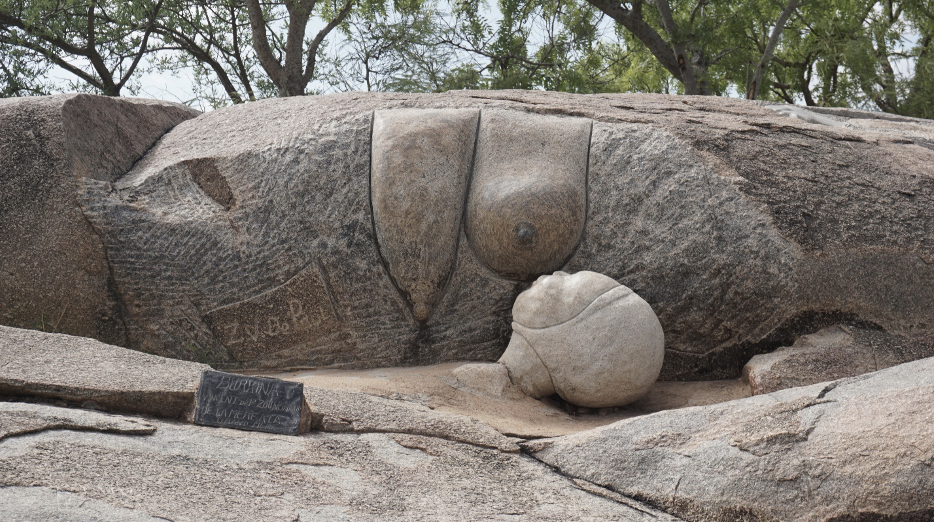
Sculptures from the Laongo park. Photo: Alia Fares
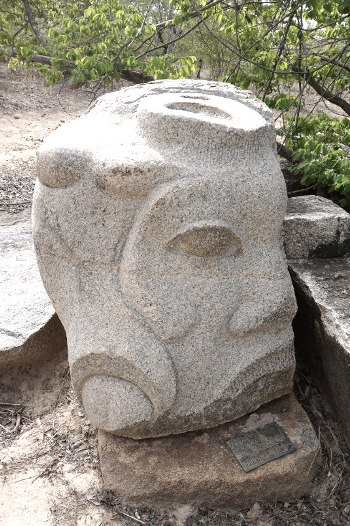
Sculptures from the Laongo park. Photo: Alia Fares
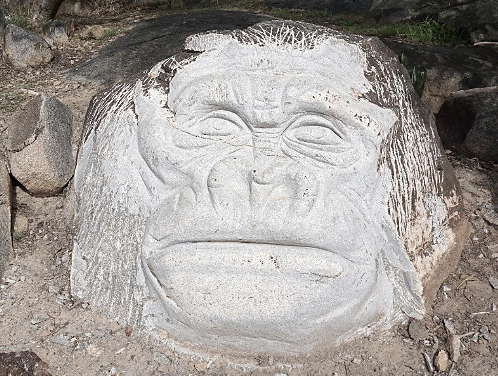
Sculptures from the Laongo park. Photo: Alia Fares
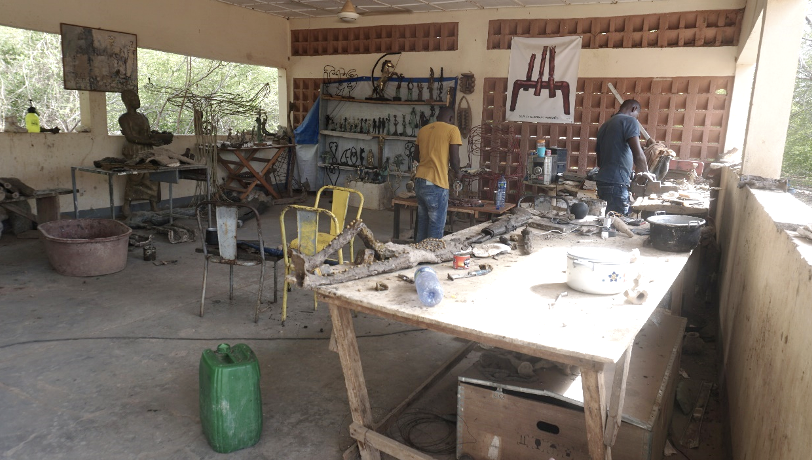
The workshop of Laongo sculpture park. Photo: Alia Fares.
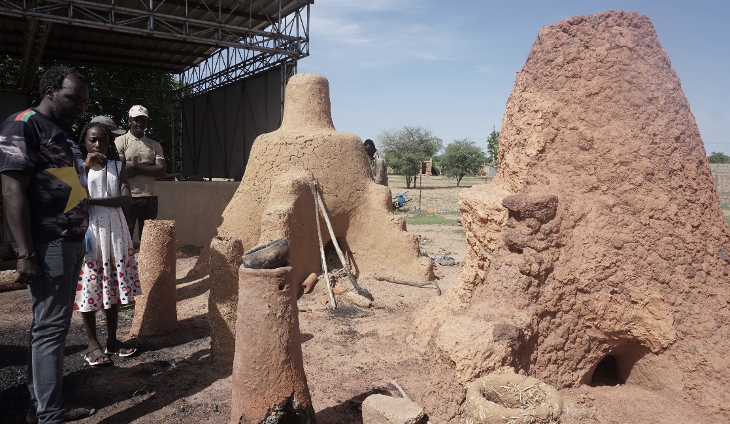
Two iron kilns at KPG’s house, in the village of Arbollé. Photo: Alia Fares.
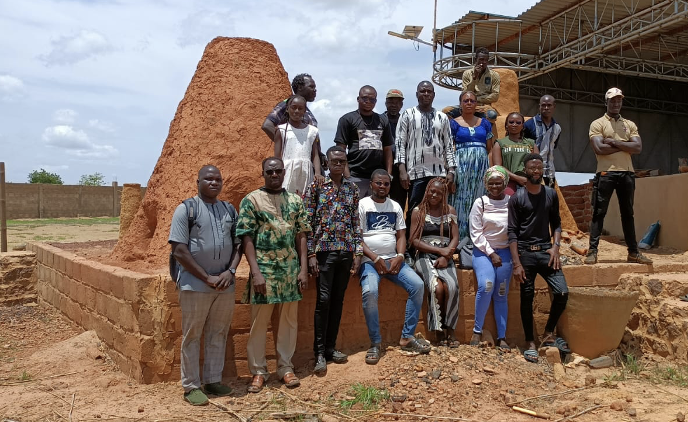
Iron kilns of Arbollé with all participants. Photo: Alia Fares.
On our last day, four archaeology students generously agreed to take me to the market to visit the modern architectural masterpiece of “Maison du Peuple”, or House of the People. To my utmost surprise, this building turned out to be a masterpiece of brutalist architecture. Designed by René Faublée and inaugurated in 1965, right after the nation’s independence, it was listed on the World Monument Watch in 2022 (La Maison du Peuple). It is considered today an emblem of Burkina Faso’s rise to freedom and a symbol of its own identity.
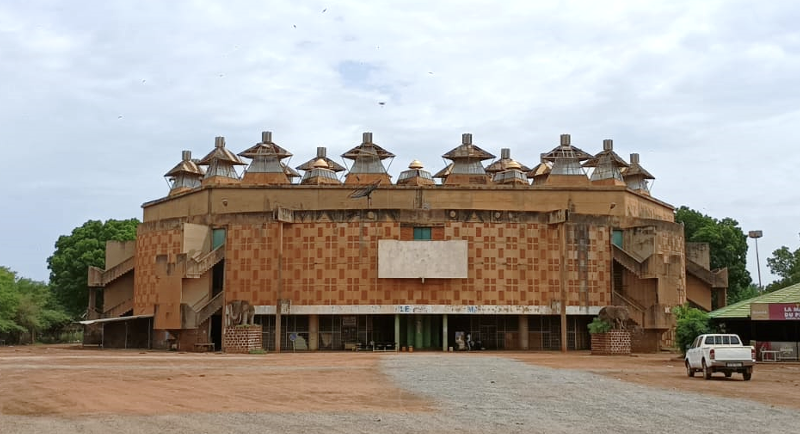
The “La Maison du Peuple” in Ouagadougou. Photo: Alia Fares.
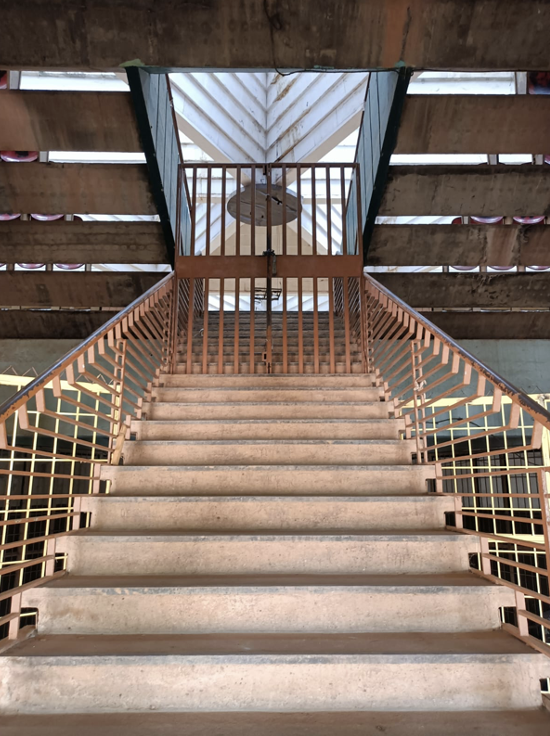
Brutalist architecture of the Maison du Peuple. Photo: Alia Fares.
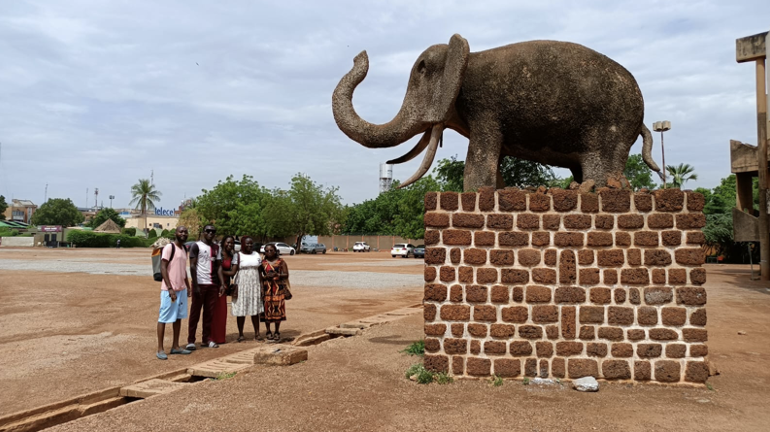
One of the two carved elephants in front of the Maison du Peuple with the students and trainer Abdelsatar Ouedraogo. Photo: Alia Fares.
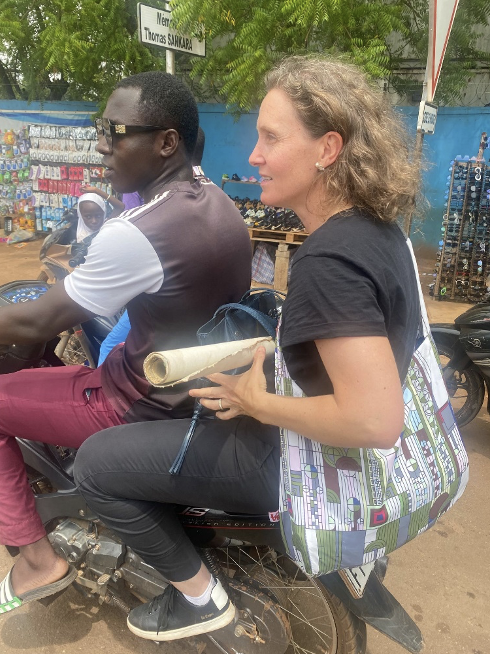
Traveling on a moped to the market in Ouagadougou. Photo: Abdelsatar Ouedraogo.
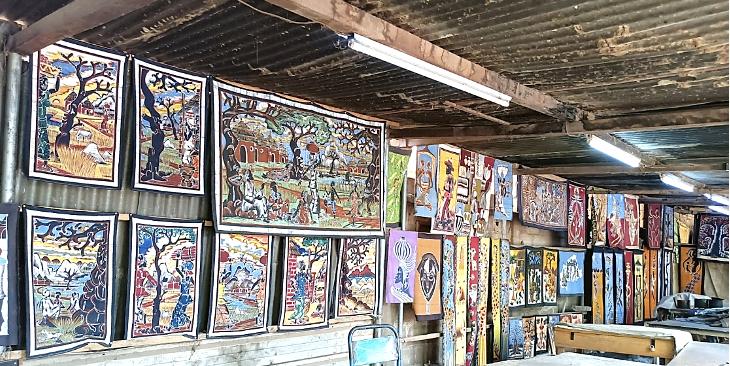
Painted fabrics at the National center of Artisan and Art in Ouagadougou. Photo: Alia Fares
While parts of the country are currently insecure, threatened by Islamic militants operating across the border with Mali, our partners remain eager to continue this heritage documentation in all regions that remain accessible. And yet, both IKAM and Koombi-Solidarité remain hopeful and tenacious, continuing their mission to document, preserve and perpetuate their nation’s diverse and pluralistic heritage.